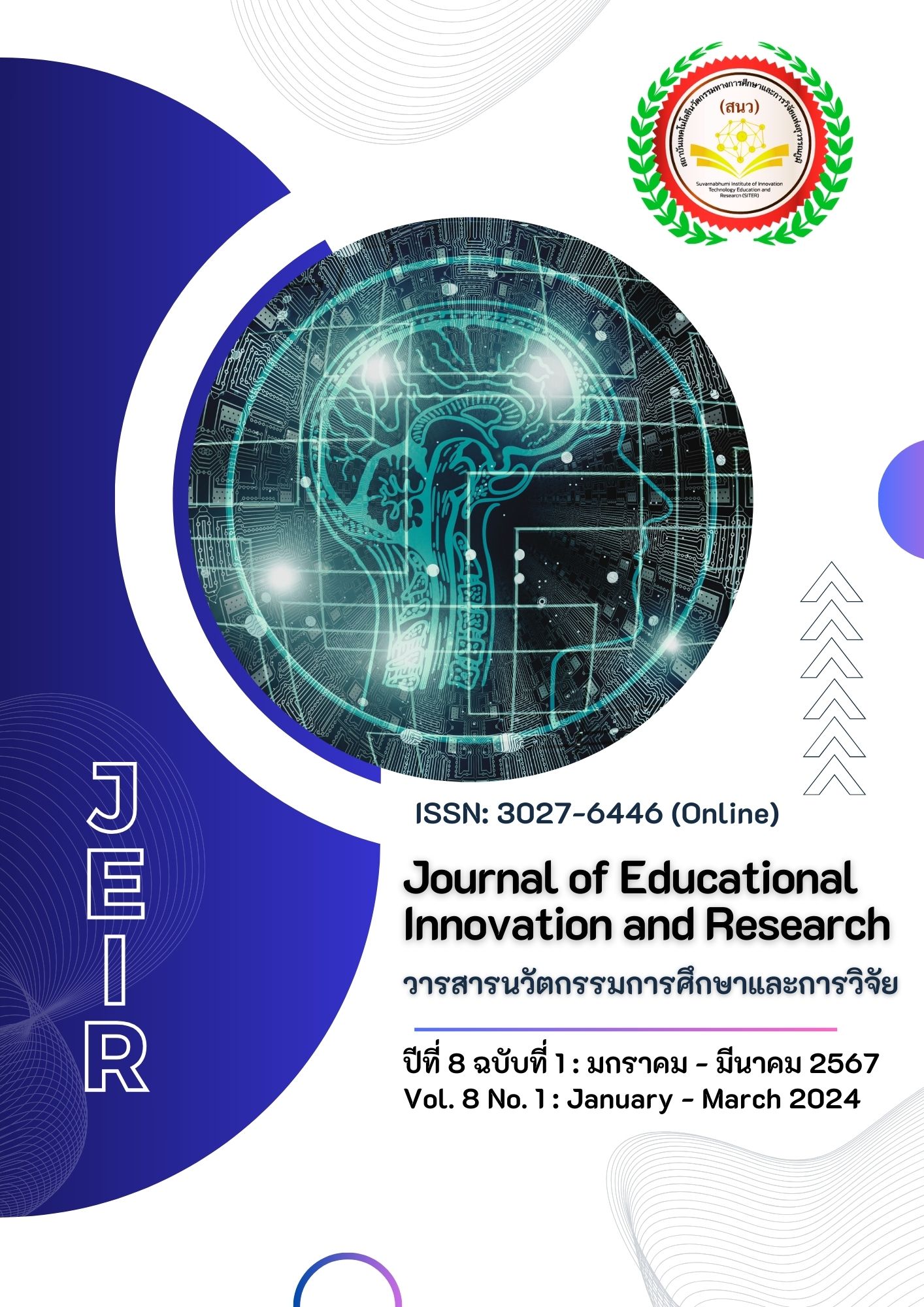The Effect of Animation-Based Performance Testing on Undergraduate Students’ Thinking Skills and Motivation
Main Article Content
บทคัดย่อ
The aim of this study was to explore the effect of Animation-based performance testing on undergraduate students’ thinking skills and motivation and to examine whether on how students increase their thinking skill and motivation by using Animation-based performance testing in Psychology courses. In this study, the researcher used sequential mixed method study to conduct the effect of using Animation-based performance testing on students’ thinking skills and motivation in Psychology courses. A total of 123 undergraduate students participated for quantitative study and two of them were implemented reporting individual experiences for the interview. The quantitative study was evaluated by using descriptive statistics such as mean, standard deviation, while, correlation, and regression were used to find out the research question 1; hypothesis 1, and hypothesis 2. Meanwhile, a qualitative study was applying thematic analysis to conduct and interpret the data to answer this research question. The regression analysis showed that Animation-based performance testing on students’ thinking skills has a positive and significant effective (R-square = 0.368; F = 20.752; Beta (β) = 0.565; T-value = 5.344; and P-value = 0.000). Therefore, the regression analysis result showed that Animation-based performance testing on students’ motivation has a positive and significant effective (R-square = 0.057; F = 7.693; Beta (β) = 0.618; T-value = 3.472; and P-value = 0.000). Therefore, two respondents were selected to interview, students revealed that Animation-based learning and teaching in Psychology subject was effective and useful for themselves to enhance thinking skill such as critical thinking skills and increase their motivation.
Article Details

อนุญาตภายใต้เงื่อนไข Creative Commons Attribution-NonCommercial-NoDerivatives 4.0 International License.
เอกสารอ้างอิง
Abdullah, I. S. (2022). The Study of Thinking Methods in Light of the Sternberg’s Theory among Students of the Faculty of Basic Education. Journal of Positive School Psychology, 6(4), 4791-4806.
Alessa (2018, July 25). Everyday learning: teaching Psychology with animated movies. https://everyday-learning.org/teaching-psychology-with-animated-movies/
Almulla, A. M. (2023). Constructivism Learning Theory: A Paradigm for Students’ Critical Thinking, Creativity, and Problem Solving to Affect Academic Performance in Higher Education. Cogent Education, 10(2172929), 1-25.
Barak, M., Ashkar, T., & Dori, J. Y. (2010). Teaching Science via Animated Movies: Its Effects on Students’ Learning Outcomes and Motivation. The Open University of Israel: Conferences, 1-6.
Bekele, B. W., & Ago, Y. F. (2022). Sample Size for Interview in Qualitative Research in Social Sciences: A Guide to Novice Researchers. Research in Educational Policy and Management, 4(1), 42-50. http://doi.org/10.46303/repam.2022.3
Cevahir, H., Ozdemir, M., & Baturay, H. M. (2022). The Effect of Animation-Based Worked Examples Supported with Augmented Reality on the Academic Achievement, Attitude and Motivation of Students towards Learning Programming. Participatory Educational Research (PER), 9(3), 226-247. http://dx.doi.org/10.17275/per.22.63.9.3
Cresswell, W. J., & Cresswell, D. J. (2018). Research Design: Qualitative Quantitative & Mixed Methods Approach (5th ed.). Los Angeles: Sage.
Demir, G. E., & Oksuz, Y. (2022). Investigating Animation-Based Achievement Tests according to Various Variables. Participatory Educational Research (PER), 9(4), 33-52. https://dx.doi.org/ 10.17275/per.22.78.9.4
Howard, E., & Sarbaum, J. (2022). Addressing Study Skills, Learning Theory and Critical Thinking Skills in Principles of Economics Courses. Front. Educ., 7(770464), 1-8. http://doi:10.3389/feduc. 2022.770464
Kuhlmann, L. S., Bernacki, L. M., Greene, A. J., Hogan, A. K., Evans, M., Plimley, R., Gates, K., & Panter, A. (2023). How do Students’ Achievement Goals Relate to Learning from Well-Designed Instructional Video and Subsequent Exam Performance? Competency Educational Psychology, 73(102162), 1-12. http://doi.org/10.1016/j.cedpsych.2023.102162
Liu, C., & Elms, P. (2019). Animating Student Engagement: The Impacts of Cartoon Instructional Video on Learning Experience. Research in Learning Technology, 27(2124), 1-31. http://dx.doi.org/ 10.25304/rlt.v27.2124
Martinez-Romera, D.D. (2018). Sternberg-Wagner Thinking Styles: A research Tool in Social Science Didactics. Journal of Technology and Science Education, 8(4),398-407. https://doi.org/10.3926/ jotse.422
Nederhand, M., Giesbers, B., Auer, J., & Scheepers, A. (2023). Animated Process-Transparency in Student Evaluation of Teaching: Effects on the Quality and Quantity of Student Feedback. Assessment & Evaluation in Higher Education, 1-14. http://doi.org.10.1080/02602938.2023. 2225813
Ratinho, E., & Martins, C. (2023). The Role of Gamified Learning Strategies in Students’ Motivation in High School and Higher Education: A systematic Review. Heliyon, 9(e19033), 1-16. http://doi.org/10.1016/j.heliyon.2023.e19033
Smithikrai, C. (2016). Effectiveness of Teaching with Movies to Promote Positive Characteristics and Behaviors. Procedia-Social and Behavioral Sciences: Conferences, 217, 522-530.
Sorden, D. S. (2012). Cognitive Theory of Multimedia Learning. http://sorden.com/portfolio/sorden_ draft_multimedia2012.pdf
Sternberg, R. J., Grigorenko, E. L., & Zhang, L. (2008). Styles of Learning and Thinking Matter in Instruction and Assessment. Perspectives on Psychological Science, 3(6), 486–506. http://www.jstor.org/stable/40212269
Sternberg, R. J. & Wagner, R. K. (1991). MSG Thinking Styles Inventory Manual. Unpublished Manuscript.
Wickramasinghe, M. H. M., & Wickramasinghe, M. M. T. (2021). Impact of Using 2D Animation as a Pedagogical Tool. Psychological and Education 58(1), 3435-3439.


